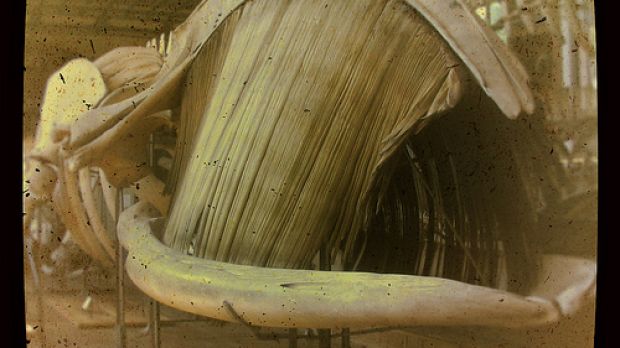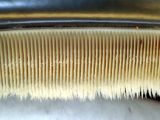There is one living thing on this planet that is able to gather nearly half a million calories in one mouthful of food, and that is the blue whale, the Earth's largest animal.
This way of feeding explains their enormous dimensions, but a team of researchers led by Jeremy Goldbogen, who is now at the Scripps Institution of Oceanography, discovered that it's not so simple being a blue whale.
Blue whales filter feed themselves, meanings they take huge mouthfuls of water and filter out their meals, usually formed by small crustaceans called krill.
As filters, they use their plates of baleen made of keratin, a protein which can be found in hair, fingernails and feathers.
This way, one mouthful of whale food can reach the 457,000 calories, 240 times as much energy as they spend for taking that mouthful.
Goldbogen's team calculated the efficiency of this type of eating, and confirmed previous theories, which said that baleen whales feed much more efficiently that their smaller siblings, the toothed whales do, by hunting down individual prey.
Study researcher Robert Shadwick, who studies animal biomechanics at the University of British Columbia, said that even if the team suspected this, the baleen whale remains the most efficient feeder in the animal reign.
Shadwick told LiveScience that “when they take a gulp of water, they are filling their mouths with the amount of water equal to their own body mass, so there is nothing that comes close to doing that.”
The researchers wanted nevertheless to find out exactly how much energy the whales use when they dive for food, so they recorded 200 dives, between 2002 and 2007.
Goldbogen, who was then a doctoral student calculated the whales' speed by recording the sounds they made as they dived, and had the help of a parachute aerodynamics expert, to work out the forces acting on the whales as they lunged.
The final calculations revealed that the whales spent as much as 8,071 kilojoules (1,900 Calories) on a single lunge.
To find out how much food the whales could get in one lunge, the researchers measured the jaw bones of whales in museums, and estimated the volume of their mouths.
After combining this with krill densities, they figured out how much energy the animals captured in one mouthful – up to 1,912,680 kilojoules (about 457,000 Calories).
Even if these whales can eat a lot at once, this is far from easy for them, because as they dive for krill, their mouth opens to 80 degrees and it fills with water.
This entire process slows don the whale, and it has to spend a huge amount of energy to get back to the surface.
The researchers did mention that a whale can make up to six lunges in one dive, and Shadwick added that “they are doing something that is energetically very expensive, but they are getting an enormous payoff.”
The finding is described in the Journal of Experimental Biology.

 14 DAY TRIAL //
14 DAY TRIAL // 
